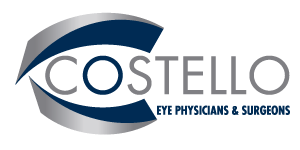Typical Patients that undergo LASIK surgery
Generally LASIK is used for patients that are nearsighted (myopic), farsighted (hyperopic) and/or have astigmatism. Additionally, the patient typically has a stable vision prescription that is not rapidly changing and good overall eye health. For example, a diopter of change over 1-2 years.
The patient is usually between 18 – 65 where cataract formation has not occurred.
Costello Eye Physicians offers a complimentary screening for new patients to help determine if you are a candidate. Only through a thorough examination is your doctor able to determine what vision correction option is right for you. If your doctor does not think LASIK is the answer for your specific circumstance, he will work with you to determine what is the right method for correction of your vision. LASIK is only one of the many options you have at Costello Eye Physicians.
Medical conditions can impact your success with surgical treatments, too. For example, patients with diabetes may develop cataracts at an earlier age, have unstable prescriptions from unstable glucose levels, or have retinal problems which make it more difficult to obtain a good result with surgical or glasses correction. Your eye care team will evaluate these complex factors when you are seen for a thorough examination. Women who are pregnant should typically wait for a few months after delivery or nursing before undergoing LASIK. Be sure to inform your doctor of any medications you may be taking as they may cause changes or fluctuation in your vision.
Physical conditions that may also reduce your success or increase your risk with LASIK laser vision correction include:
- Autoimmune diseases such as lupus or rheumatoid arthritis
- Cataracts or diabetic retinopathy with loss of vision
- Uncontrolled glaucoma
- Keratoconous (thinning and asymmetric steepening of the cornea)
- Amblyopia (lazy eye)
- Severe dry eyes
- Keloid scars after surgery
- Current use of Accutane, Cordarone or Imitrex
Because contacts temporarily alter corneal shape, patients who are interested in vision correction surgically should remove them for three full days if they are wearing soft contacts, or three full weeks if they are wearing hard contacts (gas perm contacts) before the testing is done for surgical correction. Your doctor is often able to obtain a general idea of whether you might benefit from LASIK even if you are wearing contacts, but at some point you will still have to remove them to make sure your cornea is stable.
If you have any questions or wish to set up a screening or an exam, contact one of our locations or via our web inquiry form.





